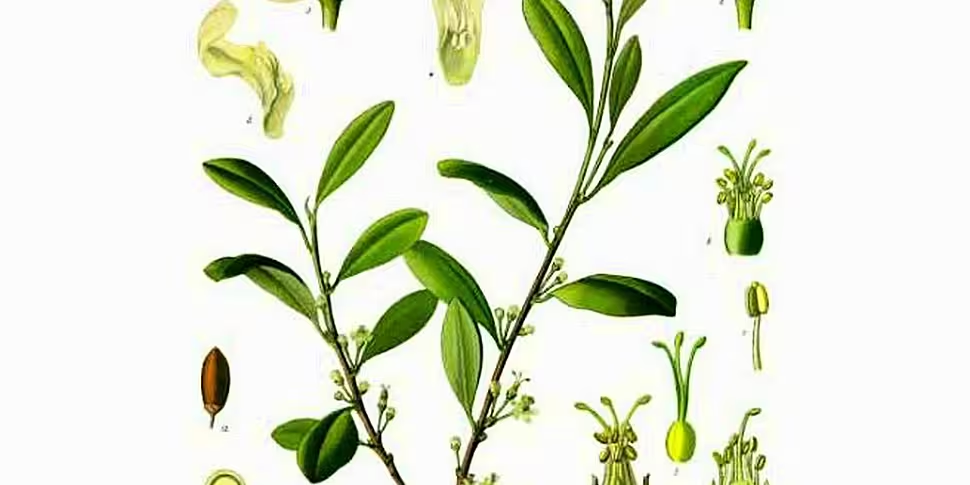A small dose lifted me to the heights in a wonderful fashion. I am just now busy collecting the literature for a song of praise to this magical substance
– Sigmund Freud
You can tell a lot about someone based on the drug they use, or at least that’s what we’re led to believe. From acid dropping ‘drippy hippies’ to weed smoking ‘stoners’ and heroin injecting ‘junkies’ our popular perceptions are riddled with these drug associated stereotypes. Cocaine is no exception to this rule, and for many people cocaine is still seen as ‘god’s way of telling you you are making too much money’.
Yet today that image of the rich and powerful snorting powdered cocaine through rolled up money is strongly juxtaposed by the image of toothless mouths swallowing cheap crack cocaine smoke through well worn glass pipes. This diverse nature of current cocaine users reflects the complex history of the drug and how it has changed in form and function depending on time and geography.
A highly addictive stimulant derived from the leaves of the coca plant, cocaine was first used millennia ago by tribes in the Andean region of South America who sought out its euphoric energy and numbing effects for religious and medicinal reasons. Chewing or stuffing clumps of lime treated leaves into their cheeks these native people could work harder, faster, and longer and didn’t need as much food.
The arrival of the Spanish conquistadores, however, turned this plant against the peoples to whom it had been so staple and sacred. Though not strictly slaves the native South American Amerindians were severely exploited by the conquering Spanish who used them to mine and harvest the local wealth. Coca leaves were often used in this exploitation as Ecomenderos fed the energy giving leaves to their charges, the resulting chemical strength and vigour increasing the amount of wealth generated.
The plant’s religious and cultural use would, however, long outlast the exploitative plantations. The last outposts of the Spanish Empire in South America were removed during the 19th century. Yet today the traditional chewing of coca leaves is still practiced across much of South America with many tribes connecting to their ancestors through this simple ritual. The 19th century not only saw South American independence it also saw this ancient drug enter into the modern era after chemist Albert Niemann isolated the mind altering white powder from its host leaves in 1859.
Over the following decades this new wonder drug gained supporters and admirers across all spectrums of life with figures like Sigmund Freud and William Halsted extolling the effects of their favourite stimulant. The discovery of cocaine coincided with and encouraged a rise in interest in the effects of the coca leaf. Wines and tonics infused with the leaf began to spring up around the world. Today the most famous of these is probably Coca-Cola, yet at the time Vin Mariani led the pack; supposedly boasting Queen Victoria, Pope Leo XIII, Thomas Edison, and Ulysses S. Grant amongst its admirers and users.
As the end of the 19th century neared cocaine consumption rose. The previous high cost of production had kept the consumer base limited. A reduction in the cost of manufacture, however, made cocaine much more available. Coupled with this was the drug’s growing popular image as an intellectual and spiritual stimulant thanks to figures like Sir Arthur Conan Doyle, Robert Louis Stevenson, and Jules Verne. By the turn of the 20th century cocaine use was widespread across all social spectrums in a myriad of forms; the growing temperance movement had even resulted in the rise of coca sodas which offered an alcohol-free alternative to Vin Mariani and its like.
This increase in cocaine use didn’t, however, go unnoticed and it soon joined its cousins opium, cannabis, and alcohol in the crosshairs of prohibition advocates. The increased energy, vitality, and emotion that had spurned on the growth of the cocaine market were now turned against the drug in the public sphere. This was especially evident in the United States where newspapers began to tell tales of cocaine fuelled riots and linked the drug to sexual deviancy and violence.
This sensationalism, mainly aimed at the black population, wasn’t restricted to cocaine and the opening decades of the 20th century saw numerous substances restricted and banned across the world. In America cocaine became a controlled substance at federal level following the passing of the Harrison Narcotics Act of 1914. The damage to the drug had been done long before this, however, as published mortality rates coupled with cocaine’s association with the bohemian, criminal, and casual labourer took the sheen from this ‘miracle drug’.
Lacking the sensational tales of cocaine fuelled violence, and the resulting reactionary violence, other nations were slower to place bans and controls on cocaine. During the First World War, in fact, retailers offered comfort packages of cocaine, morphine, and syringes that could be sent to loved ones on the front. But with the dying of the laissez-faire attitude and the emergence of state interventionism cocaine’s days were numbered. The final nail in the coffin for cocaine came as tales of drug-crazed soldiers in the trenches seeped back to the home front.
Further and more rigid restrictions were placed on cocaine and its availability around the world in the decades following the end of the First World War. Only its medicinal qualities allowed for cocaine’s survival in any official capacity; it and its derivatives are still used in some procedures to this day. Its place in the public sphere was, however, strongly secured and, like other illicit substances, prohibition merely pushed cocaine underground and onto the black-market.
With a reputation for granting artistic inspiration and the energy to pursue it, as well as its aphrodisiacal attributes, cocaine use flourished amongst those who saw themselves as artists, either emerging or established, during the 1920s and ‘30s. With the passing of time, however, cocaine lost a lot of its allure. An emerging range of synthetic drugs took the place that cocaine had for a long time inhabited. Chief amongst these were the amphetamines and methamphetamines that gained notoriety during the Second World War.
Much like cocaine these substances amplified the performance and energy levels of their users. Soon many pilots and soldiers, Axis and Ally alike, returned home hungry for the drugs they had been fed during the war. The emergence of the post-war hippy movement pushed cocaine further to the fringes of popular culture. Caught between uppers and psychedelics, cocaine found itself a drug without a defined user. This rising wave of drug use didn’t, however, entirely overlook cocaine.
The 1960s and ‘70s had seen cocaine lose its place as the euphoric stimulant and artistic drug of choice to a new generation of substances like acid, marijuana, speed, and ecstasy. As the post-war reactionary movements began to fade away and the western world went through an economic resurgence during the late 1980s, ‘90s, and early 2000s cocaine re-asserted itself as a drug of choice.
The high standing and borderline veneration of consumerism and material wealth during this period made cocaine, with its high cost, a symbol of social status. By the end of the 2nd millennium cocaine was strongly identified with the wealthy and famous with numerous stories of actors, models, and musicians overindulging in the euphoric white powder; sometimes fatally. Yet there was a much darker side to cocaine’s renaissance.
One of the most addictive substances to humans, cocaine use fires pathways in the brain that release large amounts of dopamine. Thought to have evolved as a reward system to encourage us to seek out higher energy yielding foods, these pathways strongly encourage addictive behaviour. When smoked cocaine reaches the brain much faster than the more traditional snorting or ingesting, releasing the dopamine far more rapidly. Free from the alkaline base this cocaine smoke creates a much more exhilarating but short-lived high.
Despite the increased dangers, which include heightened risk of overdose and being set on fire, this so-called ‘freebasing’ continued to increase in popularity during the 1980s. This in turn led to the emergence of the crack cocaine epidemic after a method of removing the hydrochloride from cocaine was discovered. The resulting solution was stable and easily smokable and, more importantly, offered a cheaper and more intense high than the powdered form.
Mainly associated with the poor and marginalised communities of America, crack socially juxtaposed its traditional cousin. Cocaine was the star of novels and movies that told tales of glamorous drug fuelled falls from grace, it was the centre piece in gangster flicks filled with sharp suits and flowing dresses, and the main ingredient in so many gossip columns. Cocaine was the highlife and stardom while crack reflected the reality of a world riddled with sorrow and suffering. Despite their shared chemistry, and often shared users, cocaine and crack project two very different images and promise two very different worlds, even today.
The world’s cocaine habit was mainly supplied by South American drug cartels who cultivated mountainsides of coca to feed the growing demand. The drug even affected international politics as the influx of cocaine into the United States was met by a concerted effort to cut the supply at the source. Despite its best efforts and copious spending the United States was not able to halt either the importation or the use of cocaine. In fact Europe soon came into the sights of cocaine traffickers as the American market became saturated.
With the coming of the Great Recession and a change in taste and mindset the popularity of cocaine has, again, waned. Indelibly marked as a drug of affluence cocaine’s fortunes, or at least those who deal in the drug, rise and fall with the strength of the economy. Thanks to its multitude of forms and functions, however, cocaine will certainly follow us into future centuries.
Join ‘Talking History’ this Sunday at 7pm as Patrick hosts a discussion on the history of this most interesting of drugs. Hear how cocaine has changed through the centuries and decades, the lives it has ruined, the tales it has inspired. Listen in as we tell the story of a leaf that is vital to and representative of so many South American tribes and nations, a powder that almost defines fame and fortune, and a rock that is a byword for the broken and destitute.
Originally published 17/1/14









